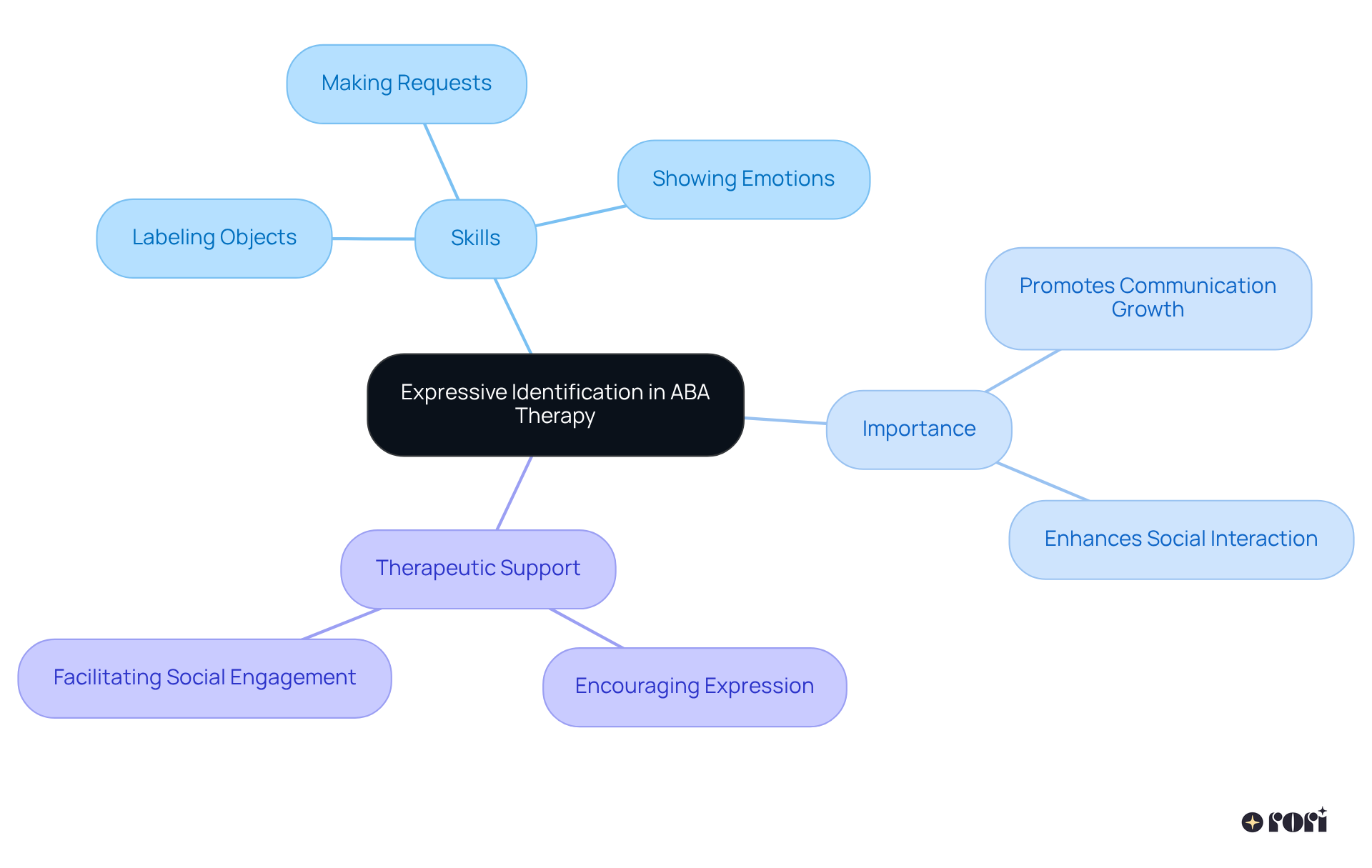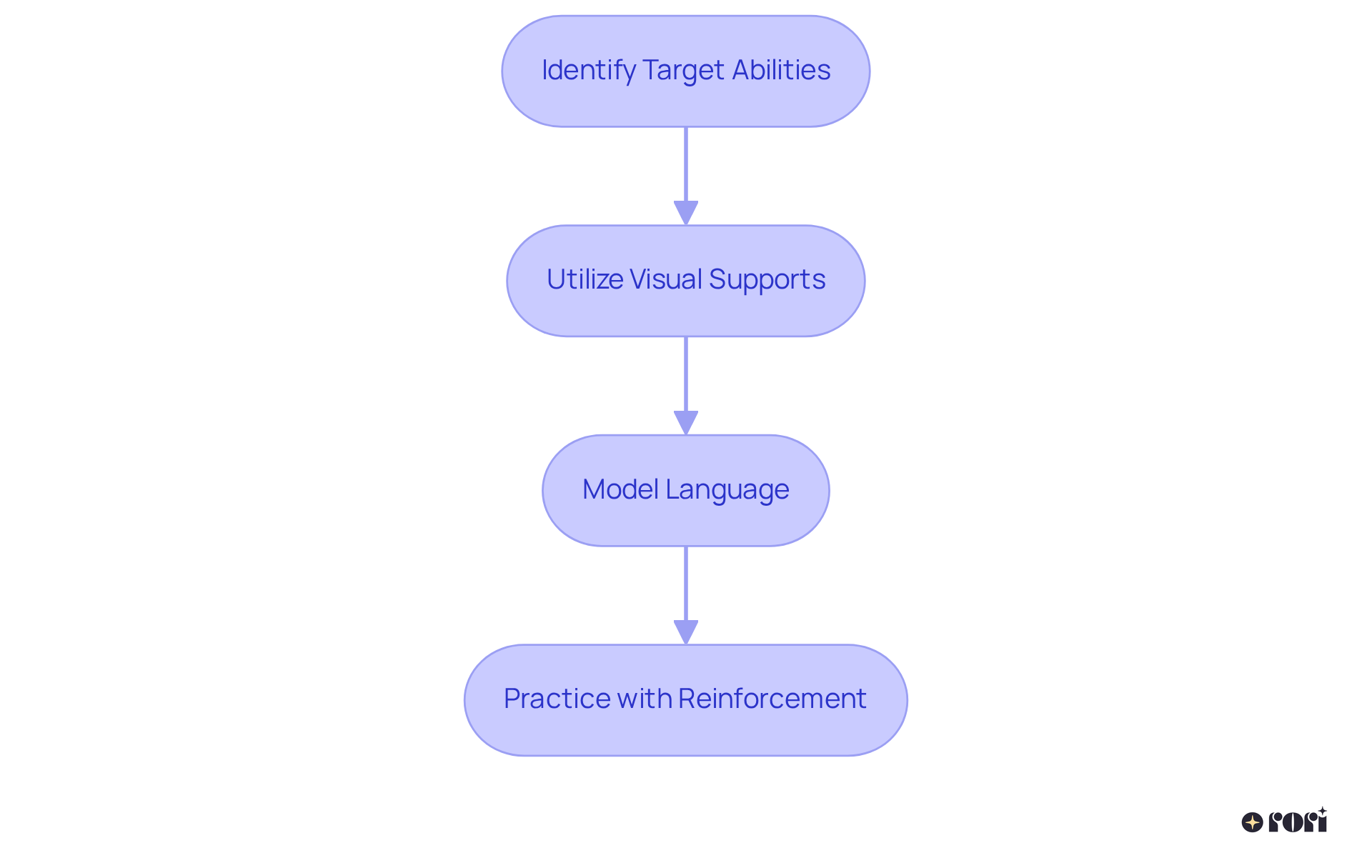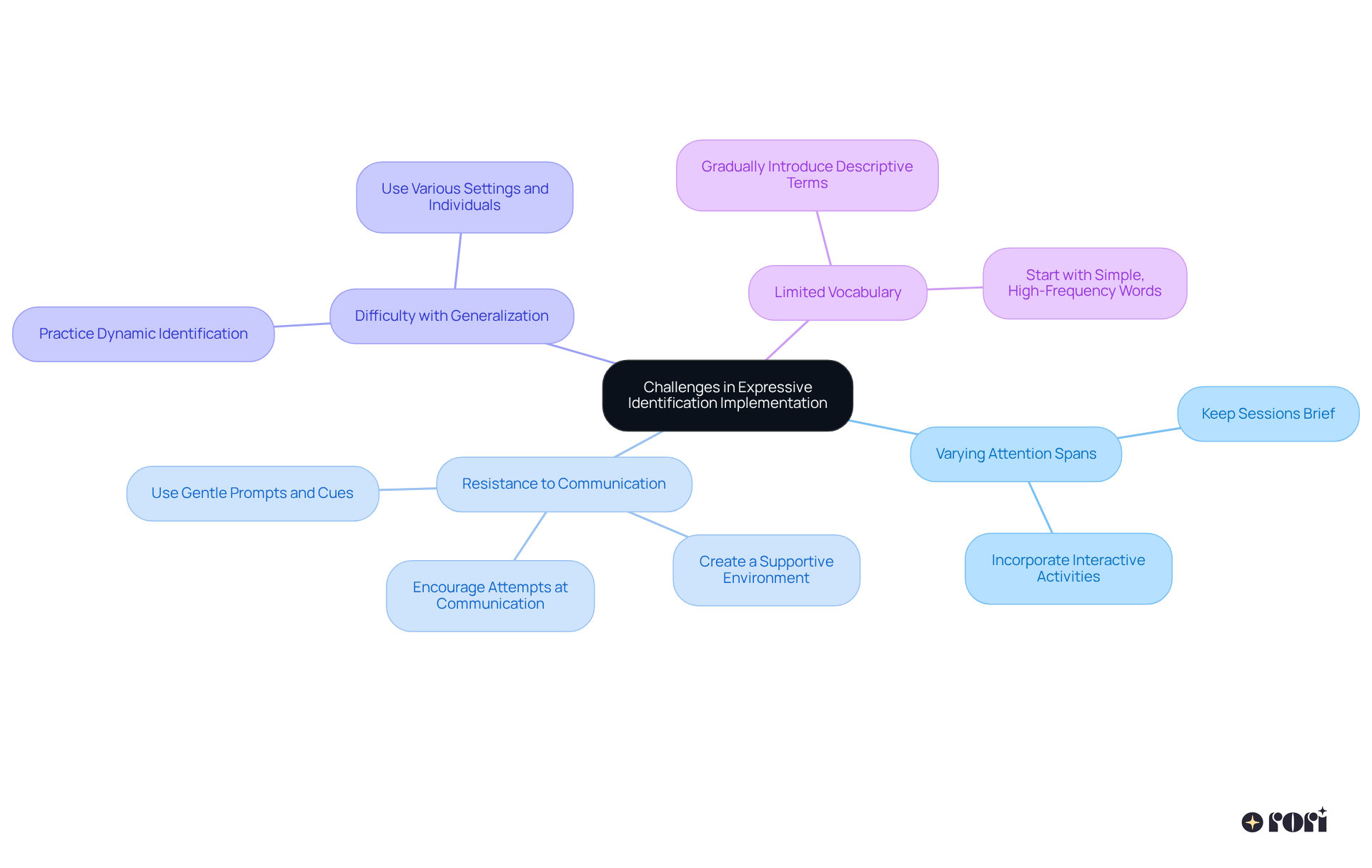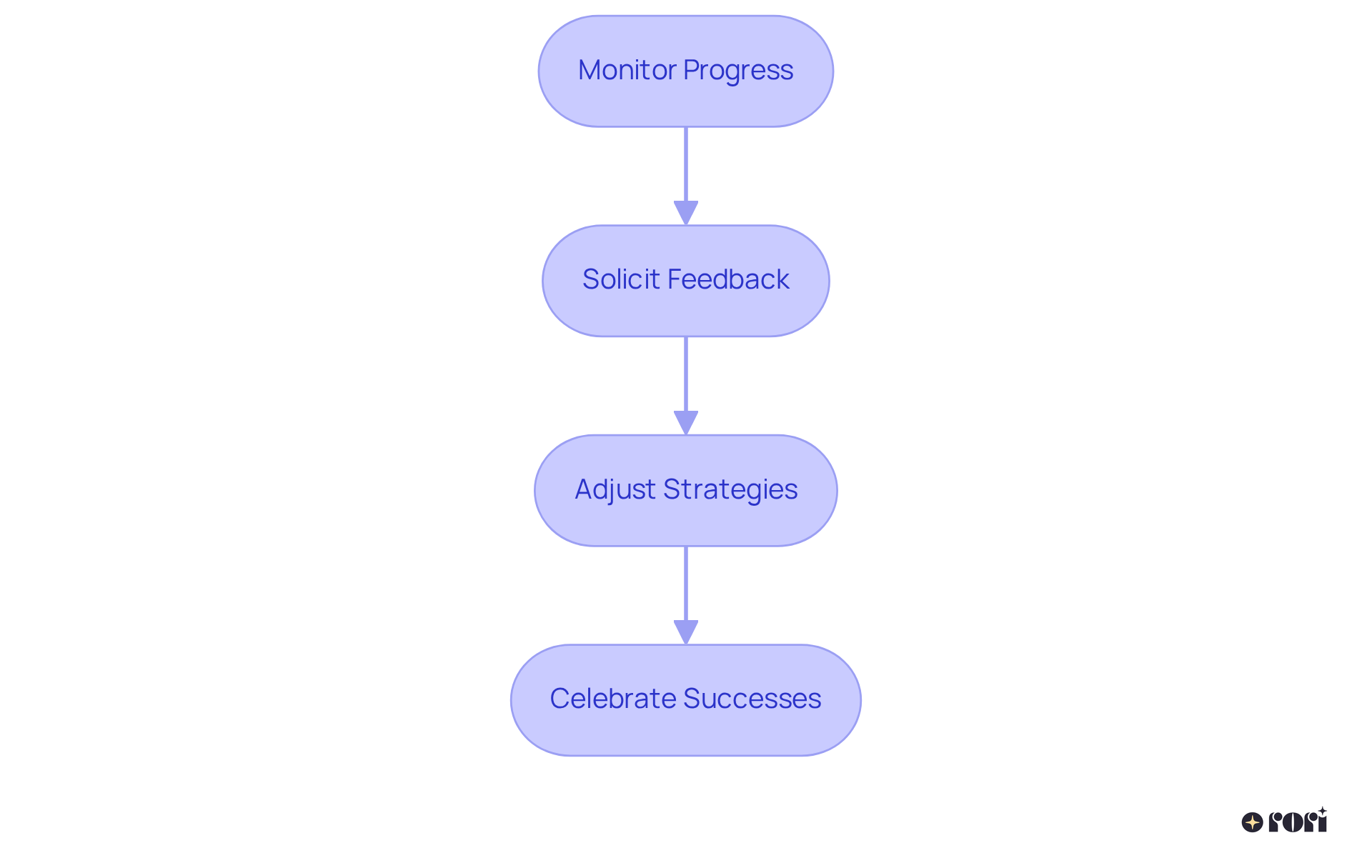This article shares four essential steps for effectively implementing expressive identification in ABA therapy. These steps include:
Each of these steps is crucial because they provide a structured approach to enhance communication skills in children, especially those with autism. By fostering their ability to express thoughts and needs in meaningful ways, we can truly make a difference in their lives. Let’s explore this together!
Expressing thoughts and emotions is so important, especially for children with autism, as it forms the foundation of effective communication. In Applied Behavior Analysis (ABA) therapy, expressive identification plays a crucial role in helping these young ones share their needs, connect with others, and explore their surroundings. However, navigating this approach can come with its own set of challenges that need thoughtful consideration and planning.
So, how can therapists nurture expressive identification skills while tackling these obstacles and ensuring ongoing progress? Let’s explore a step-by-step process together! This guide offers valuable insights and practical strategies to successfully implement expressive identification in ABA therapy, making the journey smoother for everyone involved.
Expressive identification aba in ABA therapy is all about how a child shares their thoughts, needs, and feelings, whether through words or actions. This includes skills like labeling objects, making requests, and showing emotions. While receptive identification focuses on understanding language, productive identification is about expressing it. This is crucial for communication growth, especially for individuals with autism, as it helps them connect meaningfully with their environment and those around them. By encouraging expressive identification aba, therapists can support young ones in voicing their needs and getting involved in social situations more effectively. Let’s explore this together!

Identify Target Abilities: Begin by selecting specific communication skills to focus on, like naming objects or making requests. Choose abilities that relate to the young person's daily life to spark motivation and interest.
Utilize Visual Supports: Incorporate visual tools, such as picture cards or communication boards, to help the young one understand and practice verbal communication. Visual aids can enhance comprehension and provide a handy reference for the learner.
Model Language: Show the desired communication skills through modeling. For instance, if you're teaching labeling, hold up an object and clearly say its name. Encourage the young one to repeat after you, making it a fun activity!
Practice with Reinforcement: Get the child involved in activities that promote expressive identification aba in their language use. Offer positive reinforcement, like praise or small rewards, when they successfully use the targeted skills. This not only promotes repetition but also helps them master these important abilities.

Varying Attention Spans: Many children with autism may have shorter attention spans. To help with this, try keeping sessions brief and engaging. Incorporate interactive activities that not only capture their interest but also help maintain their focus.
Resistance to Communication: It’s common for some children to feel hesitant about expressing themselves. Creating a supportive environment can make a big difference! Encourage any attempts at communication, no matter how small. Gentle prompts and cues can guide them along the way.
Difficulty with Generalization: You might notice that children struggle to apply what they've learned in different situations. To support them, practice dynamic identification in various settings and with different individuals. This approach can promote the generalization of their skills.
Limited Vocabulary: If a young learner has a limited vocabulary, start with simple, high-frequency words that relate to their everyday experiences. As they gain confidence in expressing themselves, gradually introduce more descriptive terms.
Let’s explore this together! We’re here to help you every step of the way!

Monitor Progress: It's important to regularly check in on how the individual is doing with their skills. You can observe their progress by seeing how they apply what they've learned in different situations. Try using simple methods like frequency counts or jotting down notes about what you see.
Solicit Feedback: Don’t hesitate to reach out to parents and caregivers! Their insights about the child's expressive identification aba in language use outside of therapy can be incredibly helpful. This feedback can really shine a light on the child's progress and highlight areas where they might need a little extra support.
Adjust Strategies: Based on what you learn from assessments and feedback, be ready to tweak your approaches. If a certain method isn’t working, consider trying out different techniques or adjusting your goals to better fit the child's unique needs.
Celebrate Successes: Remember to celebrate every achievement, no matter how small! Recognizing these moments not only boosts the child's confidence but also encourages them to keep developing their expressive identification aba skills. Let’s explore this together and make every step count!

Implementing expressive identification in ABA therapy is so important for helping children, especially those with autism, develop effective communication skills. This approach allows children to share their thoughts and feelings, enhancing their ability to connect with others and engage with the world around them. By focusing on expressive identification, caregivers and therapists can create a supportive environment that encourages children to express their needs and participate in social interactions.
Throughout this article, we’ve explored key strategies for implementing expressive identification, like:
We also touched on challenges such as varying attention spans and resistance to communication, along with practical solutions to overcome these hurdles. Regular assessment and adjustments ensure that each child's unique needs are met, fostering continuous improvement in their communication skills.
Ultimately, we can’t underestimate the significance of expressive identification in ABA therapy. It empowers children to communicate effectively, boosts their confidence, and facilitates meaningful connections with their peers and caregivers. By embracing these techniques and staying adaptable in the face of challenges, therapists and parents can profoundly impact a child's developmental journey. Let’s explore this together, ensuring that every step taken leads to greater expressive potential and social engagement!
What is expressive identification in ABA therapy?
Expressive identification in ABA therapy refers to how a child communicates their thoughts, needs, and feelings through words or actions. It includes skills such as labeling objects, making requests, and expressing emotions.
How does expressive identification differ from receptive identification?
While expressive identification focuses on the ability to express language and communicate needs, receptive identification is about understanding language and processing information.
Why is expressive identification important for individuals with autism?
Expressive identification is crucial for communication growth in individuals with autism as it helps them connect meaningfully with their environment and interact effectively with others.
How can therapists encourage expressive identification in children?
Therapists can support expressive identification by encouraging children to voice their needs and engage in social situations more effectively.